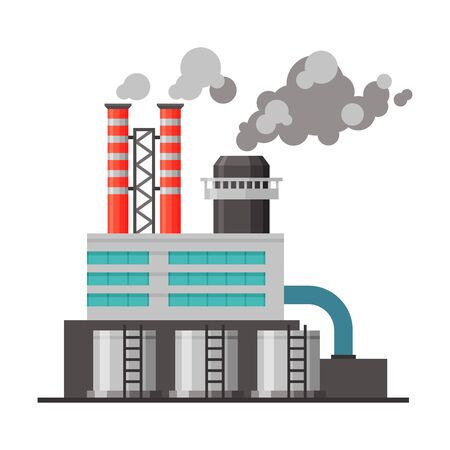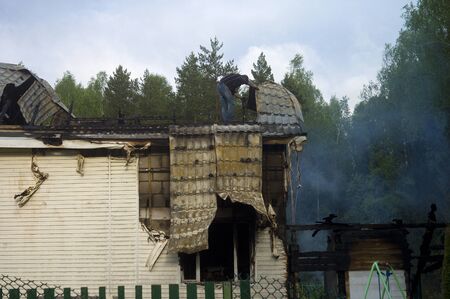Introduction to the Five Elements in Home Design
When we think about creating a comfortable and inviting home, we often focus on furniture style, paint colors, or lighting. But did you know that there’s an ancient philosophy that goes much deeper? The concept of the Five Elements—Wood, Fire, Earth, Metal, and Water—originated in Eastern traditions like Chinese feng shui. Today, these elements are finding their place in Western homes, helping people create spaces that feel balanced and harmonious.
What Are the Five Elements?
The Five Elements are more than just physical materials; they represent different energies that influence how a space feels. By understanding their qualities, we can use them to design homes that support our wellbeing. Here’s a quick look at each element:
| Element | Symbolizes | Common Features |
|---|---|---|
| Wood | Growth & Vitality | Plants, wooden furniture, green tones |
| Fire | Passion & Energy | Candles, fireplaces, bold reds/oranges |
| Earth | Stability & Grounding | Ceramics, earth tones, stones |
| Metal | Clarity & Precision | Metal decor, silver/gold hues, circular shapes |
| Water | Flow & Calmness | Aquariums, mirrors, blue/black colors |
The Journey from East to West
The idea of balancing these elements comes from ancient Chinese philosophy. Traditionally used in feng shui to harmonize living spaces with nature’s rhythms, the Five Elements approach is now inspiring many American homeowners and designers. While the origins are Eastern, the concepts easily fit into Western lifestyles—whether you live in a modern loft in New York or a cozy ranch in Texas.
Why Balance Matters in Western Homes
Our homes are our sanctuaries. When one element dominates or is missing, it can make rooms feel off-balance or uncomfortable. Blending all five elements helps create spaces that feel just right—inviting relaxation, focus, or connection depending on what you need most.
How Each Element Influences Home Design Choices
The following sections will explore how each element can be added to your home in practical ways. By weaving together Wood’s vitality, Fire’s energy, Earth’s stability, Metal’s clarity, and Water’s calmness, you can transform any room into a balanced retreat suited to the American lifestyle.
2. Wood: Bringing Nature and Growth Indoors
Why Wood Energy Matters in Western Homes
In the Five Elements theory, Wood represents growth, vitality, and renewal. In American homes, embracing the energy of Wood can lead to more vibrant, uplifting, and healthy living spaces. By adding natural materials and greenery, homeowners not only enhance the aesthetics but also create a sense of harmony with nature.
Simple Ways to Add Wood Energy
Natural Materials
Choose wooden furniture, bamboo blinds, or hardwood flooring to introduce authentic textures and warmth. Whether your style is rustic farmhouse or modern minimalist, wood fits right in.
Plants and Greenery
Houseplants are a direct way to boost Wood energy. Place potted plants on shelves, hang trailing vines near windows, or add a fiddle-leaf fig tree in your living room for an instant refresh.
Sustainable Choices
Opt for eco-friendly furniture made from reclaimed wood or sustainably harvested timber. This supports environmental responsibility while bringing positive Wood energy into your home.
Quick Guide: Adding Wood Element to Different Rooms
| Room | Wood Element Ideas |
|---|---|
| Living Room | Add a large plant, wooden coffee table, or green accent pillows. |
| Kitchen | Bamboo cutting boards, herb garden by the window, or wooden stools. |
| Bedroom | Wooden bed frame, botanical artwork, or leafy plants on nightstands. |
| Home Office | Sustainable wood desk, bookshelves with greenery, or cork board wall. |
Color Choices That Support Wood Energy
Incorporate shades of green and brown through paint, decor, and textiles. These colors evoke freshness and growth associated with the Wood element.
Tip: Balance Is Key
Avoid overcrowding with too many wood items; mix with other elements like metal or earth for a well-rounded space. By thoughtfully weaving in Wood energy, you can make your home feel more alive and welcoming—true to both Feng Shui wisdom and American comfort.

3. Fire: Sparking Energy and Social Connection
How Fire Shapes Western Home Environments
The Fire element in Feng Shui is all about energy, passion, and vibrancy. In Western homes, this energy is brought to life through features like fireplaces, creative lighting, and warm color schemes. These design choices not only boost the visual appeal of a space but also create an inviting atmosphere that encourages lively gatherings and meaningful connections.
Fireplaces: The Heart of the Home
Fireplaces are a classic symbol of warmth in many American homes. Whether traditional wood-burning or modern gas models, they naturally draw people together, providing both physical warmth and a cozy focal point for living rooms or family spaces. Gathering around the fireplace often becomes a cherished family tradition during colder months.
Lighting: Setting the Mood
Strategic lighting plays a big role in bringing Fire energy into Western interiors. From statement chandeliers over dining tables to soft table lamps in living rooms, different types of lighting set the mood for socializing or relaxing. Dimmer switches and layered lighting allow homeowners to adjust the intensity based on the occasion—bright for parties, gentle for intimate conversations.
Color Schemes: Inviting Warmth
Color is another way Fire finds its place in Western decor. Shades like red, orange, gold, and deep yellows evoke feelings of excitement and hospitality. These hues can be featured on accent walls, throw pillows, rugs, or artwork, instantly making any room feel more vibrant and welcoming.
Practical Ways to Use Fire Elements
| Fire Element Feature | Common Examples in Western Homes | Impact on Environment |
|---|---|---|
| Fireplace | Wood-burning, gas, or electric fireplaces | Adds warmth, serves as gathering spot |
| Lighting | Pendant lights, sconces, candles | Enhances ambiance and mood |
| Warm Colors | Reds, oranges, gold accents | Makes space feel lively and inviting |
| Candles & Lanterns | Scented candles, decorative lanterns | Adds soft glow for relaxation or romance |
| Artwork & Decor | Pieces featuring sunbursts or fire motifs | Symbolizes energy and movement |
The Role of Fire in Social Spaces
The presence of Fire elements transforms living rooms and dining areas into hubs of activity. It’s no coincidence that these spaces are where families gather for celebrations or friends come together for game nights—the energy from fireplaces, lighting, and bold colors naturally promotes conversation and connection.
4. Earth and Metal: Creating Stability and Modern Comfort
Integrating Earth for Grounding Energy
In Western homes, the element of Earth brings a sense of stability, warmth, and groundedness. American interior design trends often incorporate Earth through the use of natural materials such as stone countertops, brick fireplaces, clay tiles, and terracotta accents. These features help create a cozy and welcoming environment that feels secure and balanced.
Popular Ways to Add Earth Elements
| Feature | Description | Common U.S. Example |
|---|---|---|
| Stone Surfaces | Adds texture and solidity to interiors | Granite or quartz kitchen counters |
| Earthy Colors | Promotes calm and comfort | Beige, taupe, sand, and soft browns on walls or decor |
| Ceramic & Clay Accents | Connects spaces to nature’s grounding force | Terracotta planters or clay pottery in living rooms |
Bringing In Metal for Clarity and Sleekness
The Metal element is all about clarity, focus, and modern elegance. In the context of Western homes, Metal is often introduced through metallic finishes—think stainless steel appliances, chrome light fixtures, or brushed nickel hardware. These touches are especially popular in contemporary American kitchens and bathrooms for their clean lines and reflective qualities.
How to Use Metal in Modern Home Design
| Feature | Description | Typical Application in U.S. Homes |
|---|---|---|
| Metallic Finishes | Adds sophistication and reflectivity | Stainless steel refrigerators, chrome faucets, gold-accented mirrors |
| Sleek Furniture Legs/Frames | Keeps spaces feeling open and uncluttered | Sofas with metal legs or glass tables with metal frames in living areas |
| Decorative Accessories | Highlights focal points with a touch of shine or glamor | Silver vases, brass candle holders, or geometric sculptures on shelves or mantels |
The Power of Neutral Tones: A Perfect Balance of Earth and Metal
A major trend in U.S. interiors is the use of neutral color palettes—shades like gray, white, cream, and taupe—that represent both Earth’s grounding energy and Metal’s crisp clarity. These tones serve as a versatile backdrop for any style, helping create rooms that feel both secure (Earth) and refreshed (Metal). Layering different textures within this palette—such as a stone fireplace beside sleek metal lighting—can add depth while keeping the overall vibe modern and inviting.
5. Water: Promoting Calm and Flow in Everyday Life
In Western homes, the element of Water is all about creating a sense of calm, flow, and emotional balance. Water is associated with relaxation, clarity, and renewal. By integrating water features and design elements inspired by this element, you can make your home feel more peaceful and inviting.
Why Water Matters in Home Design
Water brings a gentle energy that helps reduce stress and encourages tranquility. It also symbolizes abundance and movement, qualities that many American families appreciate in their living spaces. Whether it’s a subtle touch or a standout feature, adding Water elements can transform the atmosphere of any room.
Popular Ways to Incorporate Water in American Homes
| Feature | Description | Where to Use |
|---|---|---|
| Water Fountains | Tabletop or floor fountains create soothing sounds that mask background noise and add a relaxing vibe. | Entryways, living rooms, patios |
| Aquariums | Aquariums with fish or aquatic plants bring life and movement, while also serving as a unique focal point. | Home offices, family rooms, dens |
| Fluid Design Elements | Wavy patterns in décor, glass accents, or furniture lines mimic the look and feel of flowing water. | Bedding, area rugs, wallpaper, backsplashes |
| Reflective Surfaces | Mirrors and glossy finishes reflect light like water does, making spaces feel brighter and more open. | Bathrooms, hallways, bedrooms |
| Spa-Inspired Bathrooms | Rain showerheads, pebble tiles, and blue hues evoke the serenity of water. | Main bathrooms, guest bathrooms |
Tips for Adding Water Elements at Home
- Start Small: Try a simple tabletop fountain or small aquarium if you’re new to using Water elements.
- Add Blue Accents: Use blue throw pillows, vases, or artwork to echo the calming qualities of water.
- Create Flow: Arrange furniture to promote easy movement from one space to another—this mimics the natural flow of water.
- Smooth Textures: Choose smooth glass or polished surfaces for tables and shelves to reflect the Water element’s sleekness.
- Naturally Inspired Décor: Add river stones or shells in decorative bowls for an organic touch.
The Takeaway on Water in Western Homes
By thoughtfully infusing your home with features inspired by the Water element—whether through fountains, aquariums, or fluid designs—you can cultivate a space that feels harmonious and refreshingly serene for everyday living.


